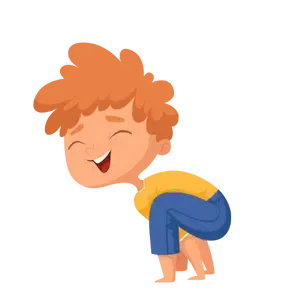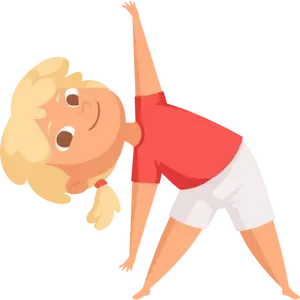Fairy tales as part of Yoga Practice for Children
The fairy tale is an important component of yoga practices for children between two and seven years old. How so? Here is an example structure for conducting a yoga practice for children aged 5-6.
- Welcoming, settling in, introductory words with the teacher and the children with each other - 3-4 min.
- Warm-up - 10 min.
- Fairy tale with yoga asanas - 25-30 min.
- Yoga breathing - 5-7 min.
- Relaxation 5-7 min
- "Free time" - the remaining 5-7 min of the hour.
Fairy tales are chosen according to the age of the children. Around ages 5-6, it is appropriate to introduce fables with a moral, such as those by Aesop or La Fontaine. When selecting fairy tales, scary stories, characters, or themes that could cause fear, misunderstanding, and confusion among the children are avoided.
After a well-chosen story, each character is likened to a specific asana that the children will perform.
For example: Grandma Bear, can be presented through a downward-facing dog.
Grandma Bear:

Stork:

Rabbit:

Stork, feeding:

The children look forward to the development of the story and transform into its characters.
The benefit of teaching yoga through fairy tales is that they manage to present to the children various emotions, relationships, reactions, lessons that people often encounter. In this way, children are introduced to real life. The fairy tales contain the life experiences, wisdom, and culture of peoples, collected over centuries and transmitted in various plots. The children emotionally go through the adventures of their favorite characters, empathize with their losses, and feel victorious along with them. They gain impressions and form notions of good and bad, and the consequences of the different actions of the artistic characters.
Another benefit that yoga for children brings is that through fairy tales, children develop their imagination. During the yoga practice, they listen to the told story, imagining the characters - what they look like, their sizes and shapes (represented through yoga asanas), their behavior, their voice. They imagine the surroundings - in the forest, in the mountains, in someone's den. The children's imagination shapes the story of the yoga teacher. Unlike electronic devices, which visually saturate the mind of children with details, here all the details are 'crafted' by them. Thinking is activated and instead of passively receiving information, the mind creates information. It satisfies the children's need to fantasize.
The rich imagination and creative mind allow for approaching everyday situations with creative solutions, breaking out of the mold, and expressing oneself in various forms - through speaking, writing, musical and visual arts.